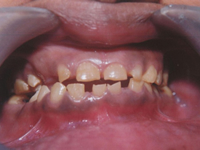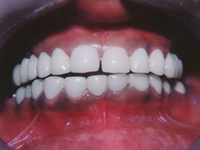Prosthodontics
A prosthodontist is the skilled architect who can restore optimum function and appearance to your smile. Prosthodontists are masters of complete oral rehabilitation who deals with crowns, bridges, veneers, inlays, complete and removable partial dentures, dental implants, tempero mandibular joint problems, traumatic injuries to the mouth’s structures, congenital or birth anomalies to teeth, snoring, sleep disorders, and oral cancer reconstruction and continuing care.
Overview- Complete Denture
- Implant or tooth supported Overdenture
- Fixed Partial Denture
- Removable Partial Denture
- The Treatment RPD (flippers)
- Cast Metal RPD's
- Flexible Framework RPD's
- Dental Implants
- Obturators
- Full Mouth rehabilitation
Complete Denture
Conventuional complete denture for completely edentulous condition for restoring aesthetics and function which takes support from the denture bearing area
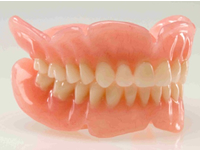
Implant or tooth supported Overdenture
Removable dentures which takes support and retention from the remaining tooth root structure or implants
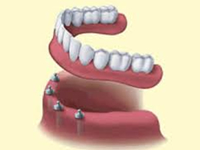

Fixed Partial Denture
Dentures which replaces the missing teeth and restores function which cannot be removed by the patient. A patient with missing teeth would often receive a fixed bridge where the teeth on either side of the space are prepared for crowns and a false tooth suspended between them.

Removable Partial Denture
If you are missing only a few teeth scattered over either arch (upper or lower teeth), or even if you have a minimum of two teeth on both sides of the arch, then you can most inexpensively replace the missing teeth with a removable partial denture (RPD).
The Treatment RPD (flippers)
This is the least expensive of all the removable partial dentures. Few adjacent natural teeth are clasped with wrought wire clasps which are cured into the structure of the denture base. The advantages are they are cheaper and that new teeth and new denture base can easily be added to an existing treatment RPD. But the acrylic denture base is somewhat brittle, and due to their irregular shape, these partials tend to break frequently, especially those made for the lower arch. They show tendency to strip off the gums so are affectionately known in dentistry as a flipper, or Gums strippers.

Cast Metal RPD's
Removable Partial Dentures with cast metal frameworks. Since they sit on the teeth, as well as being attached to them, they are extremely stable and retentive. The teeth have been altered slightly beforehand in order that the partial denture can rest upon them . The metal framework does not contact the gums. Thus, as the gums resorb, this type of partial does not sink with them and rarely requires relines. Because the teeth are altered by the dentist before hand theclasps are less likely to be seen than the wrought wire clasps of the treatment partial. Modern frameworks are cast from an extremely strong alloy called chrome cobalt which can be cast very thin and are much less likely to break than the all plastic variety.
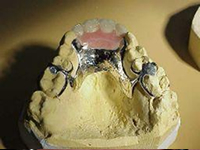
Flexible Framework RPD's
The most recent advance in dental materials has been the application of nylon-like materials to the fabrication of dental appliances. This material generally replaces the metal, and the pink acrylic denture material used to build the framework for standard removable partial dentures. It is nearly unbreakable, is colored pink like the gums, can be built quite thin, and can form not only the denture base, but the clasps as well. Since the clasps are built to curl around the necks
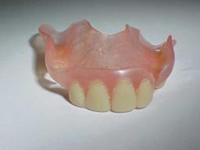
Dental Implants
Dental implants allow a missing tooth (or teeth) to be restored to optimum function and appearance without invading or damaging any other teeth or tissues. Dental implants can also replace multiple missing teeth which are traditionally replaced by a removable partial denture. Occasionally dental implants can act as anchors for a fixed bridge to replace the teeth making the removable partial denture obsolete. In some cases there are too many teeth missing to use a fixed bridge; however, using a dental implant with an attachment that snaps into the removable partial denture will significantly improve its stability and improve the patient’s chewing function. Denture wearers often suffer due to loose and “floating” dentures, and dental implants offer many benefits to patients without teeth. Stability of the dentures is improved with the use of even two dental implants with attachments, but greater satisfaction is achieved as the number of dental implants is increased. Depending on the number of dental implants utilized to replace the teeth a denture can be made that clips onto a bar supported by the dental implants or a fixed denture that remains in the mouth can be attached to the dental implants

Obturators
Maxillofacail prosthesis to restore congenital or acquired defects of stomatognathic sytem
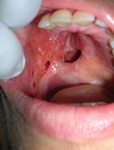
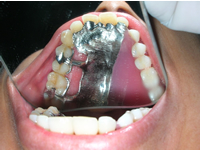
Full Mouth rehabilitation
